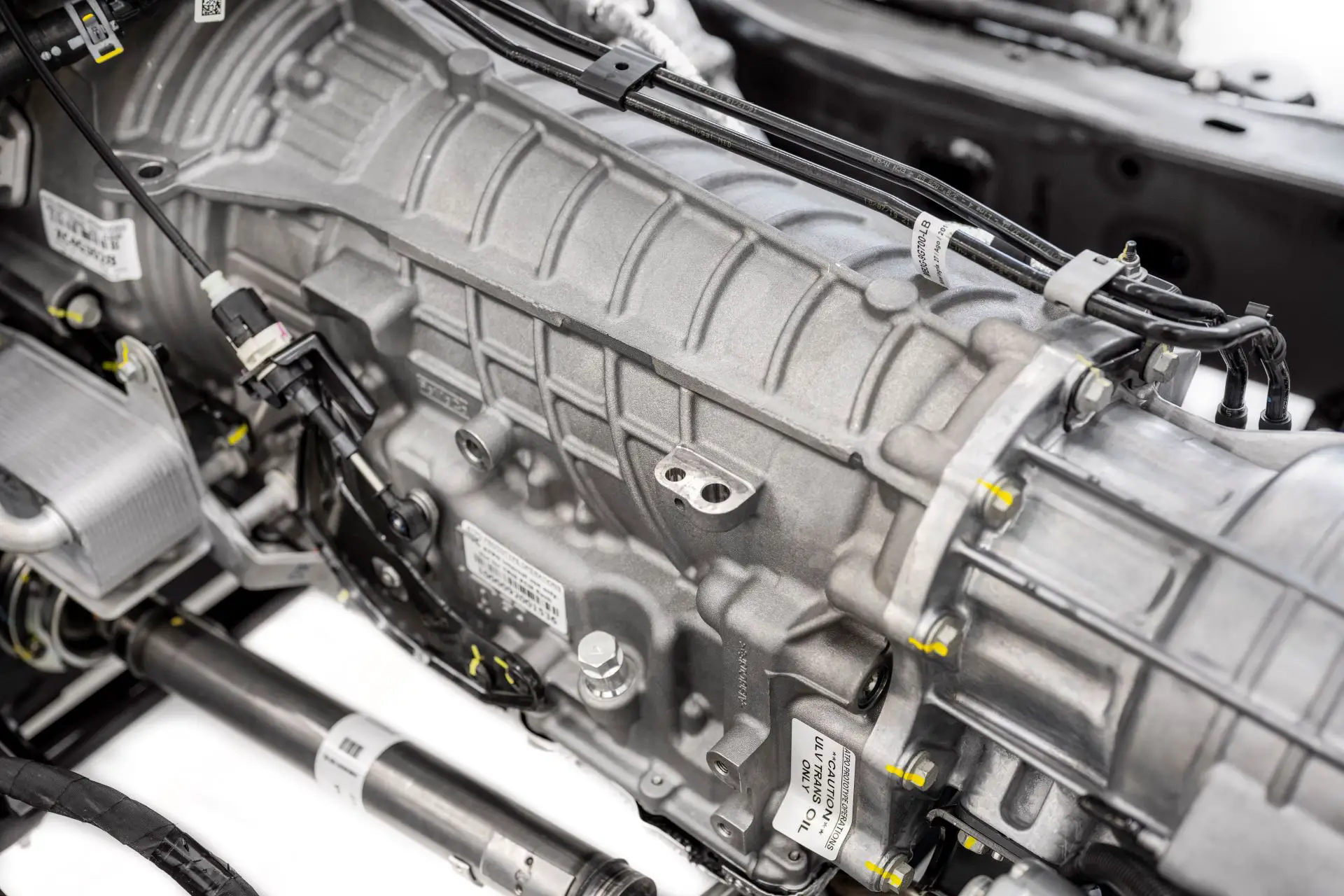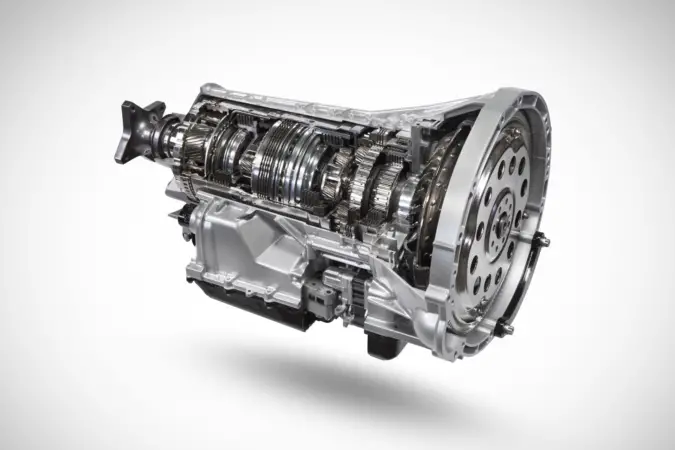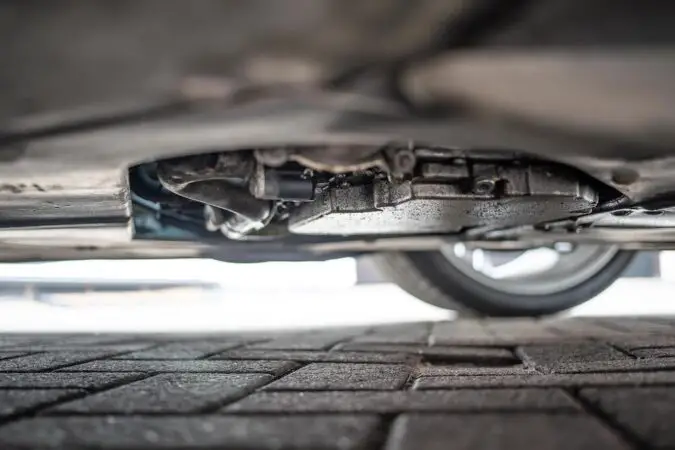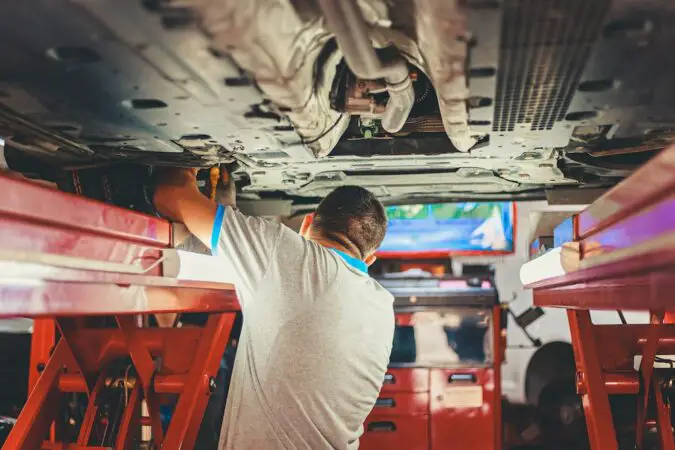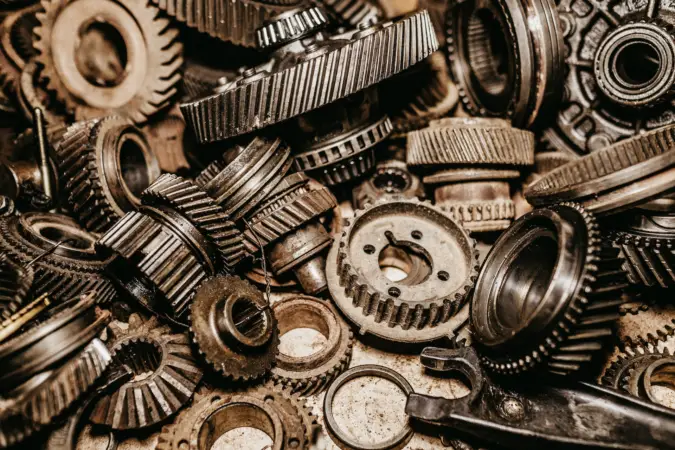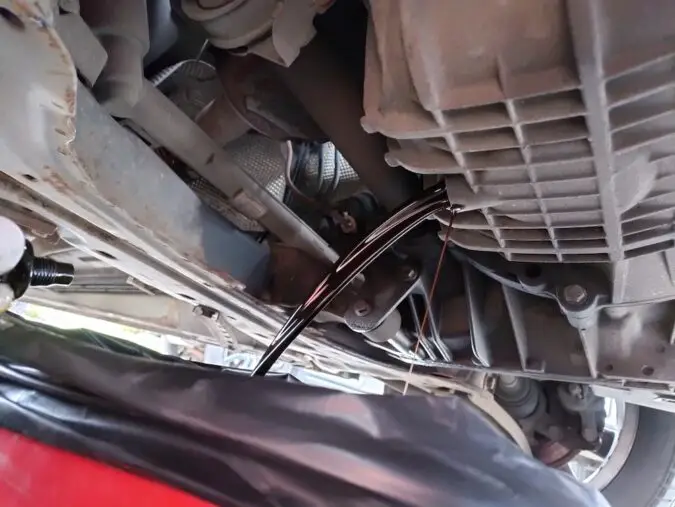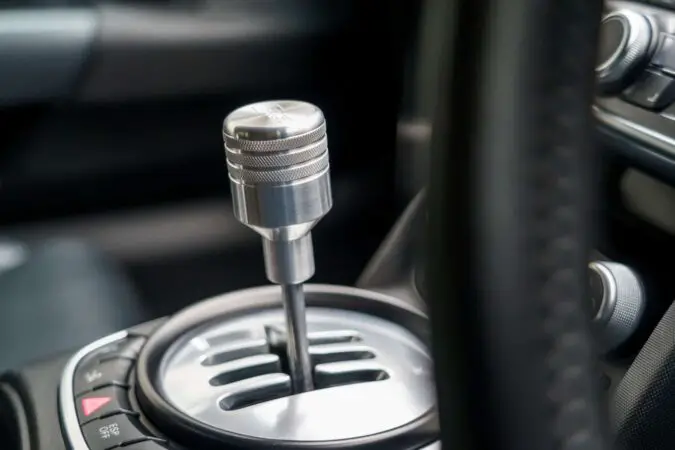What may at first appear as a little inconvenience with a transmission slip could later turn into a more significant problem that will cost more money. But what causes a transmission slip?
Transmission slippage is a sign that maintenance is required, but it does not signify that your gearbox will malfunction immediately.
Given that your car’s transmission is one of its most intricate parts, it is essential to precisely pinpoint the origin of the symptoms.
- Transmission Slipping
- Slipping Signs
- Transmission Slipping Fix
- Transmission Slipping Causes
- Cost To Fix Slipping
- FAQs
Transmission Slipping
When the transmission is slipping, it may seem like the automobile is traveling slowly. There are times when it does nothing at all when you press the gas.
The audible change in performance may be accompanied by a sound or pitch change as the transmission changes gears.
If your car suddenly swaps gears without a visible reason or your intervention, you must take it to a mechanic immediately because this could be dangerous.
Is it safe to drive while the transmission is slipping?
If your automobile unexpectedly shifts gears while you’re driving, you should get it checked out by a mechanic as soon as you can. This is possibly dangerous as the car has lost its dependability.
If it starts to shake or becomes difficult to control, kindly stop and call in a tow service to have it sent to the nearest workshop. Being aware of the symptoms is half the battle.
Have a mechanic examine your vehicle (usually a free diagnosis – though, sometimes you have to account for an additional transmission diagnostic cost). You can prevent future damage to the transmission and perhaps save a ton of money by doing this.
Transmission Slipping Signs
What Causes A Transmission To Slip, The Signs #1. Strange Smells
There are many strange smells on the road, but if one of them appears to be coming from your engine, pay attention. A burning smell from the car is a strong indicator that something isn’t operating as it should.
As transmission fluid depletes or deteriorates, it overheats and starts to burn. As a result, your engine will run hot, which will lead to corrosion, more debris, and early wear.
Entrapped plastic, antifreeze that is spilling, and melting heater cores are additional sources of burning scents. You should always have a burnt transmission fluid smell checked out, regardless of the reason.
What Causes A Transmission To Slip, The Signs #2. Noises
Excessive loudness may sometimes be a sign of a problem. If your car makes a loud banging noise while in neutral, you should get the engine checked.
The solution is frequently pretty simple. It might be a moving problem. Another option is that the fluid was the wrong type and wasn’t working.
On the other hand, it might be a problem with the bearings or the gear teeth, which would necessitate replacement.
What Causes A Transmission To Slip, The Signs #3. Strange Sounds
Whether it’s a flat tire or a broken starter, a car usually makes clunking noises when it breaks down in movies. In this case, the movies weren’t lying. Strange sounds may be a sign of a transmission problem.
When the music in your car abruptly changes, resist the urge to remark, “Well, that’s fresh.”
Clunking, buzzing, or whining sounds are symptoms of automatic transmission problems. In addition, faulty manual transmissions emit sudden bursts of loud, mechanical noise.
A transmission issue is indicated by a clunking sound when changing gears. Have a mechanic look it over.
What Causes A Transmission To Slip, The Signs #4. Check Engine Light
Although many motorists are accustomed to ignoring a persistent check engine light, there are several situations where it needs to be carefully considered.
A red or blinking light is alerting you to an urgent situation.
Sensors placed around your car may trip the warning system. Something as insignificant as a loose gas cap has the potential to light up the check engine light.
When the check engine light is set off by the transmission sensors, it is worrisome. The sensors detect minute shocks and vibrations that you might not typically notice.
Some cars also have a dedicated transmission warning light. Don’t wait till you see them if a simple diagnostic scan could provide you peace of mind.
What Causes A Transmission To Slip, The Signs #5. Fluid Leak
Your automobile has six main fluids in it. They lubricate, cool, help you steer, brake, and clear the windscreen.
If you don’t replace your fluids as soon as they leak or break down, your engine won’t run properly.
A leak in an automatic gearbox is easy to find because of its bright red transmission fluid color and nice aroma. It might also take on a darker hue and a roasted fragrance if it’s past its prime.
You can examine for a leak on your own if you see strange fluids on your driveway. Check the transmission dipstick after a brief drive to warm up the engine.
The correct fluid level is indicated by an indentation on the stick.
If your transmission fluid level is low, there is a leak. It doesn’t burn out, unlike motor oil. You can fill it up to make it through, but you’ll probably need to have the transmission re-sealed in the future.
Just make sure that if you’re doing that, you be wary of having too much transmission fluid in your car. Even if your transmission is overfilled by 1 quart, it can still be pretty bad.
What Causes A Transmission To Slip, The Signs #6. No Response
A functioning transmission will change into the proper gear on its own. If your automobile hesitates or doesn’t react, something is wrong, and the transmission is typically to blame.
This delayed shifting in a manual transmission car is followed by an increase in RPM and an unexpected engine noise.
Bringing it in for service is the only way to be assured. Perhaps it’s just your clutch.
What Causes A Transmission To Slip, The Signs #7. Clutch Drag
The clutch disc struggles to disengage when the clutch pedal is too slack (perhaps you need an adjustment), causing the clutch to spin, which is a sign of danger for manual transmission automobiles even if it is not a problem for automatic transmissions.
Because the clutch is unable to deliver engine power to the drivetrain, gear shifting is not feasible.
You’ll notice clutch drag in addition to hearing a grinding sound. This is among the more common symptoms of a slipping clutch.
What Causes A Transmission To Slip, The Signs #8. Rattles And Shaking
If your car rattles as you change into new gear, something is amiss. Normal transmissions frequently make smooth, imperceptible shifts. You shouldn’t be running down the highway.
Although initially, it is simple to disregard the problem, it gets worse over time. As the jerkiness builds up over time, you can become complacent until your gears finally fail. This can sometimes be referred to as a transmission shudder.
When using a manual transmission, your clutch may need to be upgraded or adjusted.
What Causes A Transmission To Slip, The Signs #9. Slipping Mechanism
In order to change gears, a vehicle often utilizes outside input. In a manual transmission, the driver shifts gear each time. The driver can choose between drive, neutral, and reverse when driving an automatic transmission.
If your car changes gears on its own, it is dangerous for you and bad for the engine. Gear slipping is caused by a combination of low fluid levels and transmission band wear.
What Causes A Transmission To Slip, The Signs #10. Failing To Engage Gear
It’s possible that your car will just not go into gear. We all need a break from time to time. Fluids are a common feature.
If the transmission fluids and oil are clean and full, there can be an issue with shift cables as well as clutch linkage. It’s possible that the computer in your car is to blame.
At least with that one, a quick repair is possible. The computer will restart when you reconnect your battery after 30 minutes of being disconnected.
Can You Drive A Car With A Slipping Transmission
Driving a car with a slipping transmission is dangerous. This is a result of how hazy the car’s safety is. It might shake, suddenly shift gears, deal out a lot of damage, or all of the above.
Therefore, have your transmission inspected as soon as you notice any signs that it might be sliding.
Transmission Slipping Fix
If the sliding is being caused by ineffective fluid or insufficient fluid level as a consequence of a leak, you might still fix the issue yourself by checking and replenishing the fluid or even by repairing the leak.
For bigger transmission problems, including worn-out or faulty bands, gears, and clutches, the gearbox must be disassembled. Only individuals with in-depth knowledge of auto maintenance should undertake these steps.
Torque converter and solenoid replacements should be handled by professionals.
1. Check And Top Off If The Fluid Level Is Low
One of the simplest ways to avoid problems is to regularly check your fluid level.
Once a month, open the hood, find the gearbox dipstick, and check the ATF fluid level (every two weeks if you drive a lot).
Always perform this with the engine running to ensure an accurate reading from the internal pump.
If the fluid appears black, is particularly thin, smells like burnt rubber, or appears dirty, change it straight away. And while you’re there, be prepared for the transmission fluid change cost. Particularly, with specific vehicles like the transmission fluid change cost for your Honda, for example.
If the level is lower than the recommended level indicated on the dipstick (as is noted in your Ford transmission fluid change servicing interval and how often do you change transmission fluid), immediately add more fluid to halt further harm. To find out more, check out our guide on whether should you change transmission fluid.
There are various types of ATF, so check the car owner’s manual to be sure you choose the proper type.
The conventional method for adding fluid to an automatic transmission is to place a funnel into the dipstick tube. If you have any questions, see your owner’s manual.
2. Drain And Refill Any Burned-Out Or Worn-Out Fluid
If the automatic transmission fluid needs replacing, you may either do it yourself or have a repair business do it for you. It can be a messy process, and performing it correctly does need some mechanical know-how.
The process is as follows:
- Lift the automobile and unbolt the pan.
- Put a catch pan and a tarp underneath it since the ATF will start to drain as you do this.
- Fluid filter replacement and removal
- The gasket for the gearbox pan should be replaced.
- Add the ATF after attaching the pan.
- Drive the vehicle, then check for leaks.
- Use plenty of cat litter to clean up the muck you just made.
3. Change Parts When There Is A Fluid Leak
You must find and fix any fluid leak coming from your transmission.
Experienced Do-It-Yourselfers are usually able to recognize the symptoms particular to a particular car, swap out the broken parts, and fix the problem.
If you’re unsure of your ability to fix the problem, locate a repair company right away. Otherwise, that tiny transmission leak might lead to a much bigger, more costly problem.
4. If Everything Else Fails
In the event that none of the aforementioned fixes are effective, it might be necessary to replace your transmission or take your car to a reputable transmission repair shop.
Causes Of Transmission Slipping
Let’s look at what causes a transmission slip.
What Causes A Transmission Slip #1. Transmission Fluid
One of the most frequent factors that you can attribute to what causes a transmission slip is a slipping transmission that comes in the form of low transmission fluid and its symptoms.
Most likely, the transmission fluid leak is the result of a flaw in your system. It could be hard to find out if you have a leak as many modern cars will not feature fluid dipsticks which let you see the amount of the transmission fluid.
Your best and safest choice for doing a precise level check of how to the transmission fluid is to bring your car for a diagnosis at a reputable repair facility.
Overheating due to low transmission fluid eventually causes catastrophic damage.
If the hydraulic pressure is low or is lacking in your transmission due to overheating, this may cause the transmission to slip, make it hard to engage, or even move from one speed to another.
As a result, materials, and parts that experience friction wears out quickly. How much the transmission will cost to repair will go down the sooner the issue is identified and fixed.
Find out from the manufacturer how frequently you should change your car’s gearbox fluid and filter.
Depending on your level of carelessness, using old, dirty, or contaminated transmission fluid can damage your transmission immediately or over time.
If you use your car to tow, haul large goods, reside in a region with rocky or steep terrain, inclement weather, or stop-and-go traffic, ensure to add your transmission fluid even more frequently.
For those vehicles operating in such conditions, the majority of automakers will issue tight service recommendations that are more frequent and for lesser mileage.
What Causes A Transmission Slip #2. Transmission Bands And Clutches
All automated gearboxes have friction clutches, which are necessary for frictional holding as well as the driving mechanisms required to move the various transmission parts between the various gears.
Many of them also have friction bands.
To function properly and avoid a slipping or difficult shifting gearbox, the clutches and bands are absolutely dependent on clean, cool, and full transmission fluid.
As a result of fluid leak, wear, as well as stress that is on the vehicle’s gearbox and driveline, clutches, and bands in your transmission may fail or degrade over time.
The only method to fix this issue is to take your car in for servicing.
Hydraulic pressures, valves, solenoids, and computerization help regulate transmissions constructed in the last 30 to 40 years.
Older transmissions’ transmission bands received some changes.
Paper-thin friction plates are a feature in automatic gearbox clutches and bands.
Transmission slippage could eventually occur if routine fluid changes and service inspections are neglected for the transmission. If you’re doing it on your own, make sure you also know whether to check the transmission fluid when the engine’s hot or cold.
This is because friction material on the clutch plates and bands would eventually wear out.
What Causes A Transmission Slip #3. Valve Body
The transmission has a component that resembles a human heart almost exactly. It has a large number of teeny-tiny valves, solenoids, and temperature sensors.
This valve body, which the computer manages, controls the flow of fluid to the clutches, bands, and other crucial components to provide when the gearbox should engage in gear, shift, or downshift.
This valve body has several sliding valves that resemble metal rods with holes sliced along their length. These gaps fit with a route that allows fluid to flow in that direction.
The shift lever on your dashboard or steering column, or computer-controlled solenoids, often helps to operate these valves.
Fluid escapes to the wrong areas as a result of wear on the transmission valve body in the region where these valves slide, leading to shifting or slippage issues.
Age and a lack of upkeep are the two main causes of this highly prevalent issue. The dirty fluid wears the bores and valves like sandpaper. And if the valve body itself has failed, you may have to consider a pricey valve body replacement cost.
What Causes A Transmission Slip #4. Gears
The planetary gear sets in your gearbox consist of a central sun gear, planetary gears revolving around it, and a ring gear encircling the planetary gears.
They are necessary for creating compounding ratios that allow you to accelerate as well as turn your car around.
Transmission gears are designed with durability and dependability in mind. But just like any other part of your car, all of these intricate gears are susceptible to wear and tear over time if there is a lack of proper handling and maintenance.
The planetary gear set will not mesh with companion gears correctly for a secure fit if it breaks. Damaged or worn-out gears need replacing.
Damage to metal gears results in worn-out or broken metal entering solenoids, valves, and transmission channels, which leads to additional serious issues. a ring, planetary gears encircling the central sun gear.
What Causes A Transmission Slip #5. Solenoids
The electrohydraulic solenoid serves as a gatekeeper by regulating the amount of transmission fluid that moves through your transmission at any given time.
So what causes a transmission slip? Your transmission may have issues if there is damage, obstruction, or wearing out of the solenoids. Or, it could instead be the transmission solenoid fuse. If you notice any shift solenoid symptoms, you might then have to consider a pricey transmission solenoid replacement cost.
Failure of solenoids may cause an excessive or inadequate amount of transmission fluid to flow through your transmission’s pressure regulators and shifting passages, which may cause a variety of issues, such as the transmission slipping, overheating, or failing to shift.
What Causes A Transmission Slip #6. Torque Converter
An element that moves the rotating power from the motor to the transmission is called a torque converter, in case you want to know what it is. This could be what causes a transmission slip.
Through a fluid connection, it offers a smooth transition from the engine to the transmission and boosts the engine’s torque.
Additionally, valves, solenoids, as well as clutch material will help lock the torque converter during overdrive or the last gear. The torque converter also aids in lowering noise and vibration.
A torque converter’s failure or malfunction (just be wary of the symptoms of a bad torque converter) can make the rest of the transmission squeal, slip, and become overheated.
Transmission Slipping After Fluid Change
When you utilize old fluid, it may become discolored and lead to the formation of varnish deposits inside the system.
As long as there is the use of the fluid, these deposits normally float around the old fluid and do not settle anywhere, which leads to transmission issues after a fluid replacement.
The deposits will transform into sludge, which adheres to the filters in your transmission system when you switch out the old fluid for new fluid. This limits the ability of transmission fluid to pass through it.
If you serviced the transmission without replacing the filter, it clogged and prevented the hydraulic pressure system from working. And despite their similar use of hydraulic principles, it’s a good idea to avoid testing whether you can use transmission fluid for power steering fluid.
Slipping may occur as a result. Whenever you replace them, the transmission filters could have poor retention and are going to occasionally slide out and will sit on the pan’s bottom. Slipping may come from this.
In manual gearboxes, slipping is 90% of the time due to the clutch. A clutch disc can last from 20,000 to 200,000 miles, depending on how you drive.
Transmission pan gasket failure can be a result of a number of different things, including a bad seal, burst fluid lines, a leak in the pan, or a crack in the torque converter. The latter is going to cost you a lot for a torque converter replacement (if you want to learn more, check out our review of the B&M torque converter and the best torque converter).
Look for any leaks by checking the fluid level, the underside of your car near the pan, and the drive.
Because it will leave the majority of deposits behind, it is best to avoid using cheap transmission fluid.
These buildups on your filter stop transmission fluid from flowing, which raises the temperature and increases friction in the transmission’s parts.
Cost To Fix Slipping Transmission
If you only need a few parts and labor hours to get the manual (as you would with an Audi TT manual transmission) or automatic back in working order, the repair is a good choice.
Repairs are less expensive than replacing or rebuilding a transmission. The average cost of a transmission repair is between $350 and $1,500.
If your manual transmission, for instance, requires a brand-new clutch, you should prepare to spend between $800 and $1,500 for a typical clutch replacement cost.
However, replacing a transmission is one of the priciest repairs you can have. A replacement may cost between $1,750 and $3,500.
Labor costs might range from $500 to $1,200 depending on the repair facility and technicians. The cost, on average to replace a transmission:
- Remanufactured transmission: $1,300 to $3,400
- Salvage or used – $800 to $1,500
- From $1,100 to $2,800 to rebuild
Rebuild Your Transmission Or Replace
Rebuilds of transmissions can be about as expensive as replacements. More expensive rebuilding tasks may require starting from scratch after a complete failure or rebuilding the transmission of a luxury vehicle.
Most Common Transmission Issue
You should handle any issues with the transmission quickly because they are so crucial. Keep an eye out for these things:
- Having trouble changing gears
- Uneven shifting
- Slipping automatic gears
- Delay in switching to the “Drive” gear
- Leaks of transmission fluid
- Dashboard warning lights
Frequently Asked Questions
Can The Transmission Be Damaged By Changing The Transmission Fluid
If everything is functioning properly inside the transmission, changing your fluid cannot harm the transmission on its own. In case your clutches are already worn down or damaged from use, the problems start to show themselves when you change the fluid. If the fluid is changed after it has already been worn out this may result in slippage.
What Is A Transmission
In order to maintain an adequate engine RPM, a transmission adjusts its gear ratio based on the vehicle’s speed and accelerator input, or how far down the car’s pedal is pushed. This has two advantages: There is a reduction in fuel usage. Your engine is not overworked by the shifting gears.
What Does The S Mean On A Gear Shift
The S mode designates sport. The S mode makes your car’s throttle response less sensitive, which makes driving feel more dynamic. When opposed to using the D or Drive mode, more fuel is injected into the cylinders, which causes the RPM of your car.

